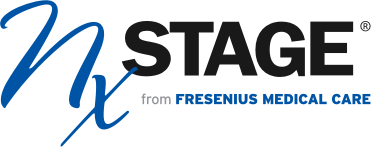MythBusters Part 2: Home Dialysis Fact vs. Fiction
Still considering home hemodialysis (HHD) but still want to learn more after watching our first MythBusters Webinar? Then listen to our fantastic patient speaker panel in our second part of this series to learn more common myths and misconceptions surrounding home dialysis: specifically about self-cannulation, prescription and frequency, and nocturnal home dialysis. Hear how they overcame obstacles and barriers throughout their journey home.
Watch our one-hour on-demand webinar to learn more about
- Tips on learning to self-cannulate
- Getting your days back with Nocturnal Dialysis, with a care partner
- Benefits of More Frequent Home Hemodialysis (MFHHD)
Speakers

More Frequent HHD Patient



About
- Myths and misconceptions about HHD
- Nocturnal Dialysis
- Self-cannulation
- Machine portability
Patients should review the following information carefully and discuss it with their doctorsto decide whether home hemodialysis with NxStage systems is right for them.
Users should weigh the risks and benefits of performing home hemodialysis with NxStage systems.
- Medical staff will not be present to respond to health emergencies that might happen during home treatments, including, among other things, dizziness, nausea, low blood
pressure, and fluid or blood leaks. - Users may not experience the reported benefits of home, more frequent, or nocturnal hemodialysis with the NxStage systems.
- The NxStage systems require a prescription for use.
Users will be responsible for all aspects of their hemodialysis treatment from start to finish.
- Medical staff will not be present to perform home treatments. Users will be responsible for, among other things, equipment setup, needle insertions, responding to and resolving
system alarms, system tear-down after treatment, monitoring blood pressure, ensuring proper aseptic technique is followed, and following all the training material and instructions that
nurses provide.
Users will need additional resources to perform home hemodialysis.
- Users will need a trained care partner to be present during your treatment at home (unless their doctor prescribes “solo/independent” home hemodialysis, described below).
- Users must have a clean and safe environment for their home treatments.
- Users will need space in their home for boxes of supplies necessary to perform home hemodialysis with NxStage systems.
Certain forms of home hemodialysis have additional risks.
- If a doctor prescribes home hemodialysis more than 3 times a week, vascular access is exposed to more frequent use which may lead to access related complications, including
infection of the site. Doctors should evaluate the medical necessity of more frequent treatments and discuss the risks and benefits of more frequent therapy with users. - If a doctor prescribes “solo/independent” home hemodialysis without a care partner during waking hours, risks of significant injury or death increase because no one is present to help
users respond to health emergencies. If users experience needles coming out, blood loss, or very low blood pressure during solo/independent home hemodialysis, they may lose
consciousness or become physically unable to correct the health emergency. Users will need additional ancillary devices and training to perform solo/independent home hemodialysis. - If a doctor prescribes “nocturnal” home hemodialysis at night while the user and a care partner are sleeping, risks increase due to the length of treatment time and because therapy is
performed while the user and a care partner are sleeping. These risks include, among other things, blood access disconnects and blood loss during sleep, blood clotting due to slower
blood flow or increased treatment time or both, and delayed response to alarms when waking from sleep. A doctor may need to adjust users’ medications for nocturnal home
hemodialysis, including, among other things, iron, Erythropoiesis-Stimulating Agents (ESA), insulin/oral hypoglycemics, anticoagulants, and phosphate binders
FMCNA.COM
© 2021 Fresenius Medical Care. All Rights Reserved. Fresenius Medical Care, the triangle logo, Fresenius Renal Technologies, and Vivonic are trademarks of Fresenius Medical Care Holdings, Inc. or its affiliated companies. All other trademarks are the property of their respective owners. P/N xxxxxx-01 Rev A 02/2021



